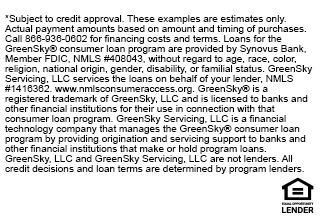The Difference Between Vented and Ventless Gas Logs

Table of Contents
Gas logs have emerged as a popular choice for home heating because of their efficiency and aesthetic appeal. The Mad Hatter proudly sells RH Peterson Real Fyre gas logs. They stand out for their renowned commitment to quality and craftsmanship. You’ll come across two primary types of gas logs when shopping online: vented gas logs and ventless gas logs. Understanding the distinction between them is essential for an informed decision.
Why RH Peterson Gas Logs?
Choosing a gas log set isn’t just about function; it’s about adding an aesthetic centerpiece to your home. And in this realm, RH Peterson shines. The brand boasts a legacy of excellence and a reputation built on stellar customer feedback. When you choose to purchase their gas logs, you opt for unmatched craftsmanship and a transformative touch to your living spaces.
Vented vs. Ventless: Making the Choice
Vented Gas Logs
Perfect for traditionalists at heart, vented gas logs provide a flame that resembles a genuine wood-burning fire. These logs are designed for homes with existing fireplaces and require functional chimneys or flues. The reliance on an external vent ensures the proper venting of fumes, making them an excellent fit for homes built with traditional fireplaces looking to convert the fireplace to a gas-powered option. Their realistic flame and design make them a visual delight, adding to the room’s ambiance.
Click here to shop RH Peterson’s selection of Real Fyre Gas Logs
Ventless Gas Logs
On the other hand, ventless gas logs are the go-to choice for modern homes or spaces without a chimney or flue. Ventless gas logs do not require a chimney or flue. Their primary allure lies in high energy efficiency, ensuring warmth remains within the room. Operational features, such as oxygen depletion sensors, come standard, automatically shutting off the gas supply if oxygen in the room drops below proper levels. Environmentally-conscious homeowners might also appreciate the reduced emissions from ventless options, making them a greener choice.
Click here to shop RH Peterson’s selection of ventless gas logs
The Mad Hatter Can Install Your Gas Logs For You
FAQ About Vented and Ventless Gas Logs
Which is better, vented or ventless gas logs?
The better option between vented and ventless gas logs depends largely on individual preferences and home infrastructure. Vented gas logs offer a more realistic flame pattern resembling a traditional fireplace but require a functional chimney or flue for proper operation. On the other hand, ventless gas logs do not require a chimney, offer higher heating efficiency, and are equipped with features such as oxygen depletion sensors.
What are the disadvantages of vented gas logs?
- Energy Efficiency: Lesser energy efficiency compared to ventless options.
- Requires Chimney or Flue: Installation demands an existing fireplace with a chimney or flue.
- Heat Loss: A significant portion of the generated heat escapes through the chimney.
What are the disadvantages of ventless gas logs?
- Flame Appearance: Flames are less realistic compared to vented gas logs.
- Potential for Odor: May produce a slight odor during operation.
- Oxygen Depletion Sensor: Necessary safety feature to monitor oxygen levels in the room.
Are vented gas logs worth it?
Vented gas logs are certainly worth considering, especially if you are aiming to achieve a traditional fireplace look with realistic flames. They are also an excellent choice if your home already has a chimney or flue, allowing for easier installation and integration into the existing setup.
How long can you leave ventless gas logs on?
Ventless gas logs can technically be left on as long as needed because they are equipped with safety features such as oxygen depletion sensors that automatically shut off the gas supply if oxygen levels in the room drop below a safe point. However, it is recommended to use them for shorter periods, ideally not exceeding 3-4 hours at a stretch, to maintain good air quality in your home.






